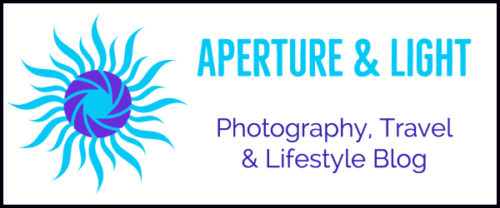When you think of artistry in photography, what comes to mind? Is it the ten primary elements of composition? Probably not. When you see an image that really moves you, what is it that grabs your attention?
Aperture priority, one of the shooting modes we highlighted in the four shooting modes article, is the camera’s creative tool. Combine the effective use of aperture with your subject and presto, you have magic. Well, almost. There are other elements that add to your artistry that we’ll be exploring later. Today we’re focused (pardon the pun) on aperture.

Settings: f/16, 1/400 sec, ISO 640 using Nikon 24-70mm 2.8
How to Create Artistry in Photography with Aperture Priority?
The aperture value (or f/stop) that you choose will determine how much of the image appears in focus and soft. Your vision of what is soft or in focus helps to set the stage for the other compositional elements.
Aperture priority is when you decide that your aperture value, such as f/3.5, f/8, f/11, f/16 or f/22 will drive the camera’s settings. This includes shutter speed and ISO if you have ISO set to automatic. (My personal preference is to manually set ISO even when in aperture priority).
An f/3.5 will have a have a small area of focus surrounded by softness, known as shallow depth of field. An f/16 will have a large area of focus with most or all of the details appearing in focus.
Learning tip: Consider a spotlight used on a theatre stage. A small aperture number is taking all of that big light and centering it on the main actor. The rest of the stage is softly lit, but you don’t notice the supporting cast. The big light is on your subject. A big aperture number is when the same amount of light is then spread across the entire stage. The whole cast appears and the main character blends in with the group. Less light, with more visible on the stage.

Settings: f/4, 1/250 sec, ISO 1000 using Nikon 24-70mm 2.8 lens
True or False? The Best Aperture Setting for a Subject
- True or False? Flowers look best when taken with a shallow depth of field.
- False! If you want to drive the eye to a specific area in a flower, a shallower depth of field may be optimal. If shooting a flower with many beautiful petals and details, a larger depth of field, such as f/16 may be preferable. Playing with multiple f/stops gives you many options in post processing.
- True or False? Landscapes should always have a big depth of field.
- False! If you’re wanting all of the details to appear in focus, a big depth of field is needed. You can also get creative with big landscapes by focusing on an interesting subject in the foreground with a shallower depth of field. The background then serves as a soft backdrop.
- True or False? Portraits of people should usually have a shallow to mid-shallow depth of field.
- Mostly True! When photographing people, their faces and expressions are what we’re after. If it’s a context scene that we’re trying to convey, a larger depth of field may be preferred to share what’s happening around our subject.
- True or False? Night photography needs to always be shot with as much light as possible. Therefore an aperture of f/2.8 or f/3.5 would always be best.
- When shooting night skies, northern lights, or street photography we want as much light as we can get. An aperture of a 2.8 or f/3.5 would be optimal in these situations.
- If shooting night subjects where there’s an interesting foreground and background, you’d like to turn lights into starbursts, working with larger aperture values may be better suited.

Settings: f/6.3, 1/400 sec, ISO 500 using a Nikon 105mm 2.8 Macro
Get to Know Your Lens
Each lens has its own look at different aperture settings. For example, an f/5.6 in a telephoto, will look different than an f/5.6 in a mid range lens. A macro lens f/4 setting will look and feel different than an f/4 in a mid range. Practice using all of the aperture settings from the most shallow to the largest depth of field with your lens. Practice across diverse subjects and focal lengths. Understanding how your lens performs will enhance your artistry and efficiency.
Artistry in Photography is not Perfection, It’s Emotion
Photography that pulls us in isn’t always perfect. There are many famous images that aren’t perfect. The image that moves us, gets our attention, stirs our soul, has an ‘it’ factor. That ‘it’ factor happens through combining your eye and technique with the camera’s settings.

